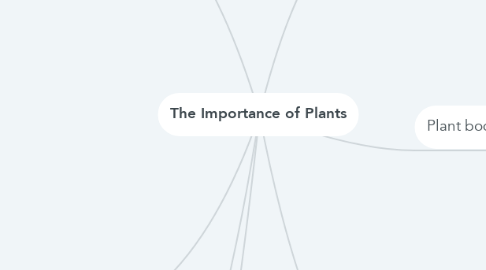
1. Structure
1.1. Leaf
1.1.1. Simple leaf
1.1.1.1. One Blade, attached to stem by petiole
1.1.2. Compound leaf
1.1.2.1. Several leaflets attached to the petiole
1.1.3. Inside a leave
1.1.3.1. Cuticle and epidermis
1.1.3.1.1. The protective barrier, covered by a waxy substance
1.1.3.2. Mesophyll
1.1.3.2.1. Site of photosynthesis, cells within the leaf
1.1.3.3. Stoma
1.1.3.3.1. O2 and CO2 enter and leave
1.1.3.4. Veins
1.1.3.4.1. Bundles of xylem and phloem
1.2. Stems
1.2.1. Herbaceous
1.2.1.1. Green and soft, dies in the winter
1.2.2. Woody
1.2.2.1. Tough and hard, lives all year
1.3. Roots
1.3.1. Fibrous roots
1.3.1.1. Equal size roots, extent over a large area
1.3.1.1.1. Found in monocots
1.3.2. Taproots
1.3.2.1. Found in dicots
1.3.2.1.1. One thick, long root
1.4. Xylem
1.4.1. Tracheids
1.4.1.1. Overlapping tubes that are long and narrow
1.4.2. Vessel Element
1.4.2.1. More efficient than Tracheids, thicker walls, long and wide
1.5. Flowers
1.5.1. Sepals
1.5.1.1. Protects the flower bud before blossom opens
1.5.2. Petals
1.5.2.1. Colourful to attract pollinators
1.5.3. Stamen
1.5.3.1. Male reproductive organ
1.5.4. Pistil
1.5.4.1. female reproductive organ
2. Transport
2.1. Xylem
2.1.1. Transports water and minerals from the root to leaves and stems
2.2. Phloem
2.2.1. Transports sugars through the plant
2.3. Stages of Xylem transport
2.3.1. Soil to roots
2.3.2. Roots to stem
2.3.3. Stem to leaves
2.4. Stages of Phloem transport
2.4.1. Source cells to phloem cells
2.4.2. through phloem
2.4.2.1. Translocation
2.4.3. Phloem cells to sink cells
2.4.3.1. Passive transport
3. Basic Needs
3.1. Energy, Nutrients and Water
3.2. Gas Exchange
3.3. Reproduce
3.4. Protection (Herbivores/ diseases
3.5. Nutrition: Carbon Dioxide + Water = Glucose + Oxygen
3.5.1. Carbohydrate are important for storing starch
4. Reponses
4.1. Tropism
4.1.1. Phototropism
4.1.1.1. A plant growing toward or away from the sun
4.1.2. Geotropism
4.1.2.1. Plants growing according to gravity
4.1.3. Thigmotropism
4.1.3.1. Plants response to touch
4.2. Coping with stressful environments
4.2.1. Flooding
4.2.1.1. Roots move above ground
4.2.2. Drought
4.2.2.1. Leaves and stems store water
4.2.3. Salt
4.2.3.1. Rain washes it away or sheds salt
5. Function
5.1. Monocotyledons and Dicotyledons
5.1.1. Provides nutrients to embryo to become leaves
5.2. Leaves
5.2.1. Defence, Photosynthesis and gas exchange
5.3. Stems
5.3.1. Connects leafs to roots (transport)
5.3.2. Raise, supports leaves and reproductive organs
5.4. Roots
5.4.1. Anchors plants
5.4.1.1. Absorbs nutrients
6. Plant body
6.1. Three groups of Vascular plants
6.1.1. Ferns, Gymnosperms and Angiosperms
6.1.2. Roots and Shoots
6.2. Main tissue types
6.2.1. Dermal, vascular, ground and Meristematic tissue
6.2.2. Dermal is protection (injury and diseases)
6.2.3. Vascular is transport and support
6.2.4. Ground is storage and the cellular processes
6.2.5. Meristematic is for growth and development
7. Specialization
7.1. Leafs
7.1.1. Protection
7.1.1.1. Spikes
7.2. Storage
7.2.1. Carbs and water
7.3. Cold weather
7.3.1. Conifers
7.4. Stems
7.4.1. Rhizomes
7.4.1.1. Thick and fleshy, stores water and food
7.4.2. Tubers
7.4.2.1. Underground stems, very large, stores sugar
7.4.3. Bulbs
7.4.3.1. Tiny underground stems, surrounded by leaves
7.4.4. On ground
7.4.4.1. Glows along soil, used for support
